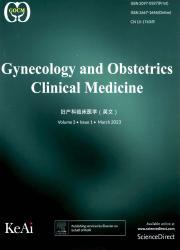Anal cancer screening in women with a history of human papillomavirus-related lower genital tract cancers: a pilot study
Q4 Medicine
引用次数: 0
Abstract
Women diagnosed with a history of lower genital tract cancer (LGTC) and precancer are at increased risk of anal cancer. Screening for anal cancer in a manner analogous to cervical cancer may detect precursor anal high-grade squamous intraepithelial lesions (HSILs) and prevent progression to cancer.In a pilot study of anal cancer screening, women with previous LGTC and aged ≥18 years in Sydney, Australia underwent a digital anorectal examination, anal swab for human papillomavirus (HPV) and p16/Ki67 testing and completed a questionnaire. Participants with positive HPV and/or p16/Ki67 results were referred for a high-resolution anoscopy (HRA) and evaluation of their HSILs.Of 52 participants, 46 agreed to screening and 6 provided demographic information only. Median age was 46.5 years (IQR: 36.0–59.0). Anal high-risk HPV (HRHPV) was detected in only seven (15.2%) participants (three HPV16). Eight (17.4%) had positive p16/Ki67 dual staining, with invalid results for 25 (54.4%). Of 10 women referred for HRA, 9 attended and 3 had HSILs, representing 6.5% of the screened population. Questionnaires were completed by 41 participants (89.1%). The majority reported that being screened was reassuring (97.5%) and was positive for their health (95.1%).This pilot study demonstrated a lower-than-expected prevalence of anal HRHPV. Screening with HRHPV and p16/Ki67 staining identified anal HSILs in 6.5% of screened women. Despite some discomfort, screening was viewed as beneficial by almost all participants. The utility of p16/Ki67 dual staining was low, suggesting it may not be a suitable anal cancer screening methodology.对有人类乳头瘤病毒相关下生殖道癌症病史的妇女进行肛门癌筛查:一项试点研究
被诊断出患有下生殖道癌(LGTC)和癌前病变的女性罹患肛门癌的风险会增加。在一项肛门癌筛查试点研究中,澳大利亚悉尼曾患 LGTC 且年龄≥18 岁的女性接受了数字肛门直肠检查、肛拭子人类乳头状瘤病毒(HPV)和 p16/Ki67 检测,并填写了一份调查问卷。HPV和/或p16/Ki67检测结果呈阳性的参与者将被转诊接受高分辨率肛门镜(HRA)检查和HSIL评估。中位年龄为 46.5 岁(IQR:36.0-59.0)。只有 7 名参与者(15.2%)检测到肛门高危 HPV(HRHPV)(其中 3 人检测到 HPV16)。8人(17.4%)p16/Ki67双重染色呈阳性,25人(54.4%)结果无效。在转诊接受 HRA 检查的 10 名妇女中,9 人参加了检查,3 人患有 HSIL,占筛查人数的 6.5%。41 名参与者(89.1%)填写了调查问卷。大多数人表示,接受筛查让她们感到放心(97.5%),对她们的健康也有积极意义(95.1%)。通过 HRHPV 和 p16/Ki67 染色筛查发现,6.5% 的受检女性患有肛门 HSIL。尽管有些不适,但几乎所有参与者都认为筛查是有益的。p16/Ki67 双染色的实用性较低,这表明它可能不是一种合适的肛门癌筛查方法。
本文章由计算机程序翻译,如有差异,请以英文原文为准。
求助全文
约1分钟内获得全文
求助全文
来源期刊

Gynecology and Obstetrics Clinical Medicine
Medicine-Obstetrics and Gynecology
CiteScore
0.70
自引率
0.00%
发文量
35
审稿时长
18 weeks
 求助内容:
求助内容: 应助结果提醒方式:
应助结果提醒方式:


